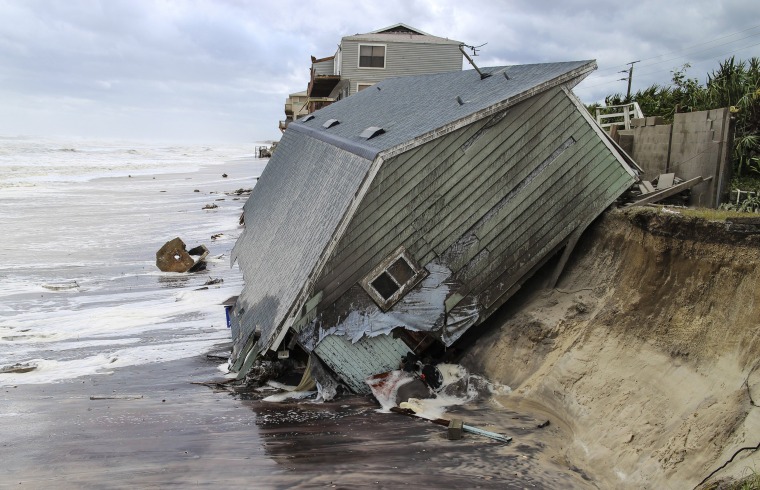Images of waterlogged or wind-whipped homes in Houston and Southern Florida might give a would-be homebuyer pause for thought — but new data actually shows the exact opposite: The threat of natural disaster does not deter Americans from moving to the riskiest areas.
Analysis from ATTOM Data Solutions found that price appreciation in cities it identified as being at the most risk for one or more type of natural hazard — earthquakes, floods, hail, hurricane storm surge, tornadoes, and wildfires — rose twice as fast as prices in low-risk locations over the past five years.
“The risk of natural disaster has not become enough of a deterrent for buyers to really have squelched demand at this point,” said Daren Blomquist, senior vice president at ATTOM. “There are still plenty of buyers who are interested in purchasing in high-risk areas, even in high-risk flood zones,” he said.
Waterfront Living
“There may well be a possible correlation between the attractiveness of a place and its risk of disaster,” said Christopher Herbert, managing director of the Joint Center for Housing Studies, Harvard University. “There are two things to factor in — one is that there are other positive aspects of these places that outweigh the expected costs of those risks. The other is whether or not the markets have been very good at factoring those risks into prices,” he said.
Related: Rebuilding Efforts Stymied by Trump's Policies
There’s some indication that it hasn’t been. Specific to flood zones, Blomquist said that the availability of subsidized flood insurance through the National Flood Insurance Program could be artificially holding down the cost of home ownership in some high-risk parts of the country. Political wrangling over reforms to the money-losing program could have a ripple effect on home prices in these places.
“There’s more talk of taking away that subsidy, which would cause home ownership to become much more expensive — that would probably sway buyer behavior,” he told NBC News.
Two of the biggest threats, storm surge and floods, are obviously related to proximity to a body of water — and Blomquist noted that river and ocean ports historically have been magnets for settlement and development because of proximity to trade, transportation, tourism and the resulting employment opportunities. The Gulf Coast’s energy reserves and the West Coast’s more recent development as a tech and engineering hub have brought high-paying jobs to these areas, which can contribute to rising prices.
Rent and Mortgage Almost Double in Disaster Zones
ATTOM data showed that the cities in the top 20 percent for natural disaster risks also have the highest average price for single-family homes, averaging $538,800,compared to the $270,336 average home price in the lowest-risk quintile.
This isn’t just taking place in the home-buying market. Real estate experts who focus on the rental market say they observe the same kind of increases.
“We definitely see a similar dynamic,” said Ryan Severino, chief economist at JLL, a real estate services and investment management company. “If you look at the top 15 to 20 apartment markets over the past six or seven calendar years, you see a lot of those are in places where there’s a higher probability of natural disasters.”
Related: Florida Confronts Damage and Darkness After Irma
The red-hot market for starter homes combined with low mortgage rates is another potentially contributing factor: Trulia.com data found that the inventory of available homes was at a one-year low in August. “I think the underlying story of inventory is really a big explanation for prices going up,” said Cheryl Young, senior economist at Trulia.com.
Young suggested, though, that this summer’s especially destructive hurricane season could have an impact on this trend going forward. According to Trulia, the South accounted for 41 percent of existing home sales last year and, through the end of August, was on track to comprise a similar figure this year.
“It’s hard to quantify something like a psychological effect… just the media attention and the devastation,” she said. “When you think about people putting a large amount of their savings and investing in this huge asset, they might pull back a bit.”
